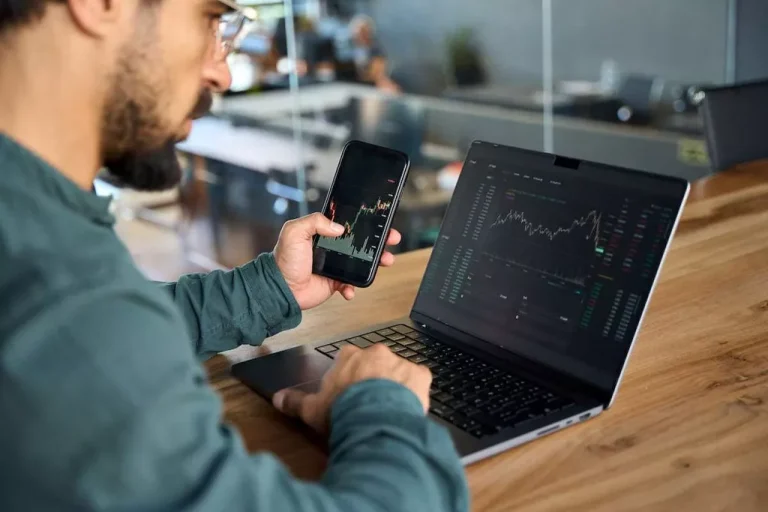Content
In this regard, the leverage can lead to you earning more than you would while spot trading. However, margin trading carries greater financial risks than trading on the spot market. The answer to “what is spot trading in crypto” is similar to how the term is used in traditional finance. Spot trading is the process of exchanging one cryptocurrency for another by placing an order in the https://www.xcritical.com/ order book.
How Does Spot Trading Work in the Crypto Market?
Since its launch on January 18, 2025, the $TRUMP token has demonstrated exceptional performance in the meme token space. Within hours of its initial release, the token’s price surged by over 5000%, propelling its market capitalization to an all-time high of 10 billion USD. At its peak, $TRUMP’s market cap temporarily surpassed established meme crypto derivative trading tokens such as SHIB and PEPE, marking a significant milestone in the crypto-meme ecosystem. While the potential for significant returns is there, it’s important to approach low-priced cryptos with caution.
What Spot Rates Mean for Traders and Markets
Additionally, forex trading is generally limited to weekdays with set trading hours, while crypto trading is available 24/7 on global platforms like Gemini. This approach differs from futures trading or derivatives, where traders speculate on the future price Constant function market maker of an asset without owning it outright. With spot trading, you gain direct ownership of the asset at the time of purchase, which appeals to those who prefer a straightforward approach to crypto investment. Thanks to the volatility of the crypto markets, savvy traders are enjoying speculating on their price movements in hopes of finding positive trading opportunities. Well, this might sound obvious, but mostly, it’s about understanding the potential behind each project.
Community and Developer Activity
A project that provides real value to its users is much more likely to sustain growth and eventually hit that coveted $1 milestone. For investors, it’s a signal that a project might just be ready to break out. So, when you’re looking for the next crypto to possibly hit $1, keep your eyes on those projects with real-world utility, strong communities, and solid fundamentals. This kind of development creates momentum, which, as a result, raises the potential for more gains. In fact, psychological barriers like these align with broader behavioral patterns[2], where people are drawn to milestones, reinforcing a sense of momentum and credibility.

Prices are determined by real-time supply and demand, and on most reputable exchanges, traders have access to a plethora of information, including order books and historical data. Depending on what you’re trading, spot markets can leave you with assets that are inconvenient to hold. If you spot purchase crude oil, you’ll have to take physical delivery of the asset.
- By offering these additional features, platform owners can generate additional revenue streams and cater to the diverse needs of their users.
- With spot trading, you are either a beginner or a seasoned trader; all the while, you are interacting with the market.
- Factors like interest rates, economic data, geopolitical events, and liquidity can influence them.
- They provide traders with crucial insights into market conditions and influence strategies across various domains.
Simply put, people who engage in spot trading, exchange one cryptocurrency for another at the current market price, without delay in delivery. Spot trading is an accessible entry point for beginners in crypto trading, offering direct ownership and immediate settlement of assets. By buying or selling crypto at the current price, traders have control over their assets and a straightforward experience. However, understanding the risks and planning carefully is crucial, especially given the volatile nature of cryptocurrencies. Therefore, it’s typically not recommended for beginners to dive into derivatives markets, and instead to figure out how the crypto spot trading works first.
Learning what is spot crypto trading like is just one small part of the entire market ecosystem. As you delve deeper and explore centralized exchanges, as well as decentralized ones (DEXs), you’ll come across many other market systems and strategies. Now that we’ve answered the crucial “what is spot trading in crypto” question, let’s take a look at what other markets there are for traders. In many cases, you’ll find that the fees are calculated based on the maker-taker model.

A decentralized exchange (DEX) is another type of exchange most commonly seen with cryptocurrencies. A DEX offers many of the same basic services as a centralized exchange. However, DEXs match buying and selling orders through the use of blockchain technology.
Be cautious of pump-and-dump schemes, where prices are artificially inflated to attract buyers before crashing. A project with little or no real-world utility or an inactive development team is also a warning sign. Always research the coin’s whitepaper, community engagement, and partnerships to assess its legitimacy and long-term potential. For example, the total supply of a coin—how many tokens are in circulation—can have a huge impact on its price. A cryptocurrency with a super high supply might struggle to hit $1 unless there’s massive demand, while a lower supply could be more likely to experience price increases over time.
This process involves selling financial assets and repurchasing more when the price decreases. Spot trading in the crypto market is facilitated through various cryptocurrency exchanges. These exchanges act as intermediaries, connecting buyers and sellers and providing a platform for executing trades. If anyone asks you to explain how crypto spot trading differs from other markets, it shouldn’t cause you any trouble. We won’t be delving too deeply into what a DEX is, and if you’re curious, you can learn all about the differences between centralized and decentralized trading platforms here. However, what we’re concerned with now is how this service works compared to spot trading crypto markets.
However, if you happen to be from the US, you won’t be able to access the main Binance platform due to regulations. Don’t worry – the crypto spot trading will be pretty much the same, so you won’t be missing out on anything. Unlike CEX platforms that act as intermediaries between traders, DEXs run exclusively on a peer-to-peer (P2P) model. Some token swaps enable cross-chain token migration, although this can affect transaction fees and speed. They carry a lot of risk, especially when it comes to crypto markets which are notoriously volatile. Although professional traders check market data and make predictions, some unexpected events, like hacks or new popular projects, can suddenly turn things upside down.
Finally, we saw how the spot trading interface works and what tools it provides you with. This knowledge might come in handy when you start trading crypto – and to prepare for this part of your journey, you can find out Binance trading guide here. They align what asset the two parties are going to trade, as well as the future trade date and the traded amount. These numbers measure how much your borrowed position can be increased. However, if things fall through, you might have to liquidate your assets to pay off the loan.
The exchange shows a 24-hour trading volume exceeding $690 million, ensuring high liquidity for seamless trading. Kraken provides a range of services, including spot trading, margin trading, and staking. With competitive fees, advanced tools, and fiat support, it appeals to both beginners and experienced traders.
Spot trading attracts a large number of traders, leading to greater liquidity and increased trading activity. Higher trading volumes attract higher transaction fees and institutional investors and market makers, increasing the platform’s profitability. On centralized exchanges like Coinbase, fees are frequently levied on listings, trades, and other trading operations. To use spot trade in the centralized exchange, users must first fund their account with the cryptocurrency they wish to trade. Moreover, the world of spot trading provides a more immediate connection to assets, a feature that many traders value for its simplicity and directness.
Leave a Reply